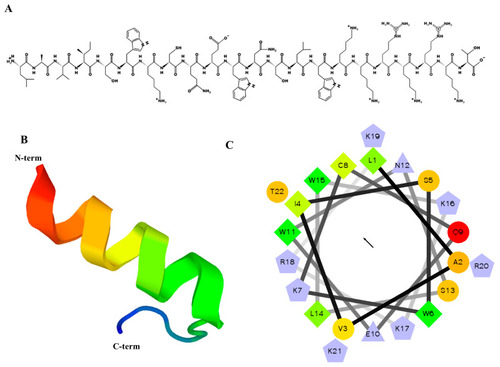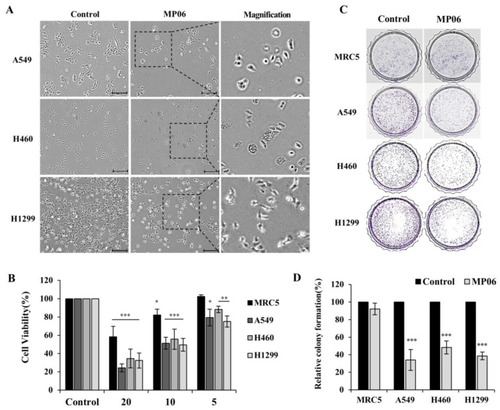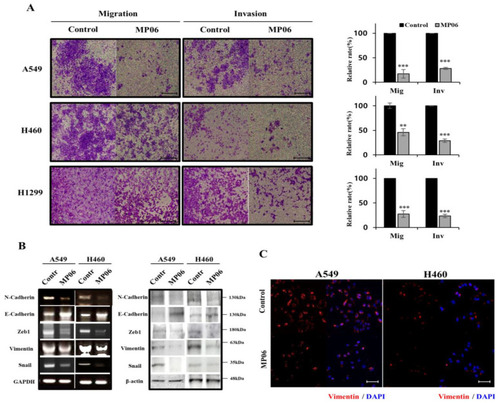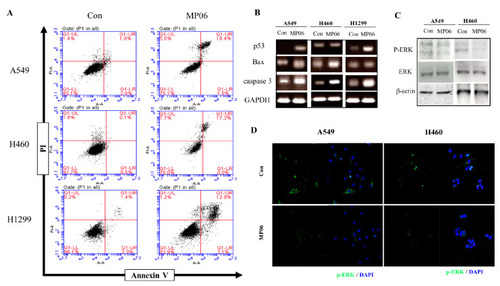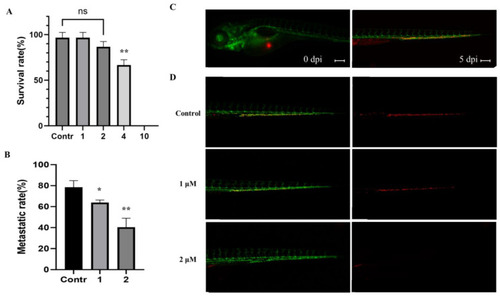- Title
-
A Novel Anticancer Peptide Derived from Bryopsis plumosa Regulates Proliferation and Invasion in Non-Small Cell Lung Cancer Cells
- Authors
- Kim, H., Kim, H.T., Jung, S.H., Han, J.W., Jo, S., Kim, I.G., Kim, R.K., Kahm, Y.J., Choi, T.I., Kim, C.H., Lee, J.H.
- Source
- Full text @ Mar. Drugs
|
Predicted helical secondary and three-dimensional structures of MP06 anticancer peptide. ( |
|
Investigating the role of MP06 anticancer peptide in NSCLCs. ( |
|
Regulation of epithelial–mesenchymal transition (EMT) in NSCLCs by MP06. ( |
|
The effect of MP06 on apoptosis of NSCLCs. ( |
|
Inhibition of metastasis on A549 cells with MP06 in zebrafish embryos ( |

